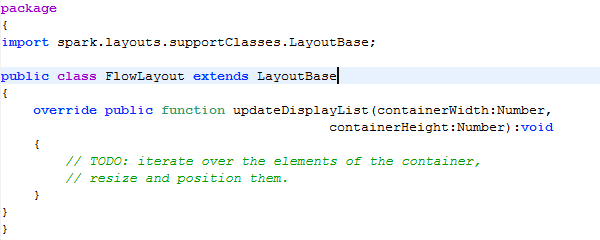

Create a ButtonEventListener object (to be shared by all 3 buttons)ĪctionListener buttonListener = new ButtonEventListener() GridLayout2 = new GridLayout( 2, 3, 5, 5 ) // 2 rows x 3 columns 5 pixel gaps between cells If flowLayout scrollDirection is vertical: inset.top offsets the item vertically, inset.bottom offsets the next item vertically or offsets contentSize if no. GridLayout1 = new GridLayout( 3, 2 ) // 3 rows x 2 columns no gaps between grid cells We will alternate between a 2x3 and 3x2 grid layout when any button is clicked. Public class FlowLayoutFrame extends JFrame When you test it, try resizing the window to see how the widgets are automatically “re-flowed” within the window. The following example includes three JButtons to demonstrate the different ways that widgets can be aligned using FlowLayout. Components may be left-aligned, centered (the default), and right-aligned.

When the edge of the container (e.g., JFrame or JPanel) is reached, the components continue to display on the next line. Using FlowLayout, GUI components are arranged in a container from left to right in the order in which they are added. FlowLayout ManagerįlowLayout is the simplest layout manager, and the default for JPanel objects. Constructors : FlowLayout (): It will Construct a new FlowLayout with centered alignment.The horizontal and vertical gap will be 5 pixels. The default layout of applet and panel is FlowLayout. Let’s study each one with a good example. FlowLayout is used to arrange components in a sequence one after the other.
#FLOWLAYOUT TOP TO BOTTOM HOW TO#
Today we’ll look at three commonly used layout managers, then talk about how to create more complex user interfaces by nesting them. FlowLayout manager, positions the components in a container within a line from left to right, starting from top to bottom. This allows us to focus on the basic look-and-feel of our interface, but lets the layout manager handle most of the pesky details. Layout managers are used to organize widgets so that you don’t have to specify the exact arrangement and positioning of every GUI component, especially as the window is resized.


 0 kommentar(er)
0 kommentar(er)
